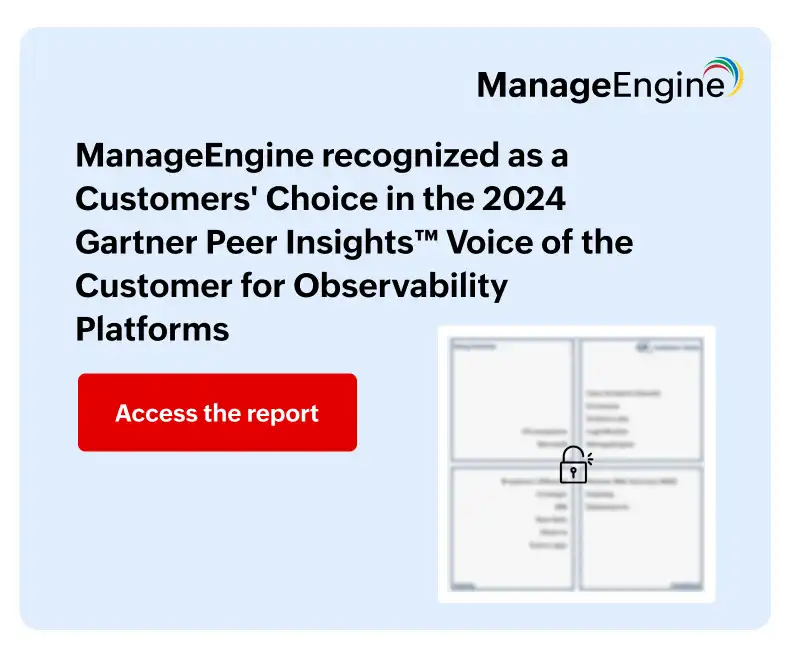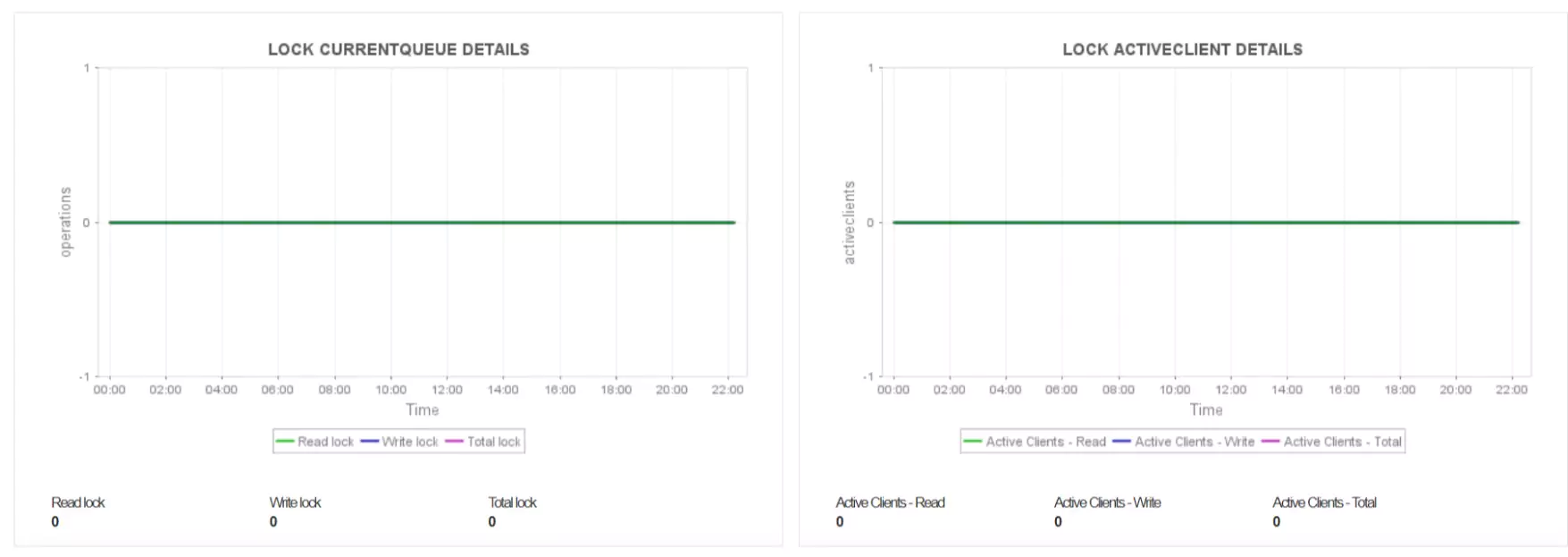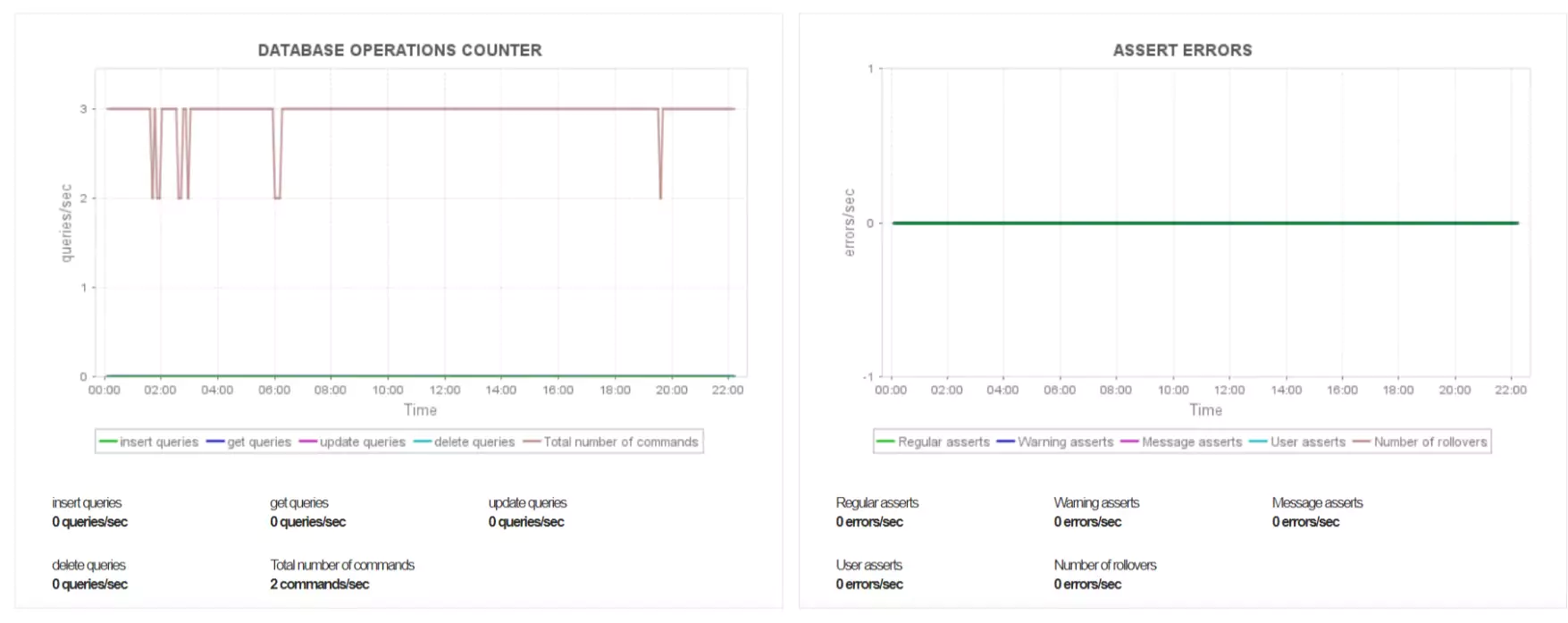Are you struggling with MongoDB performance issues like slow queries, replication lag, or high resource utilization? Do you have to constantly deal with problems like high CPU and memory usage or unexpected downtime? Monitoring MongoDB databases can be challenging, can affect your productivity, and can potentially impact your business; especially if you do not have a reliable monitoring system in place.
ManageEngine Applications Manager makes MongoDB monitoring easier and helps you reclaim your productivity. Get real-time insights into MongoDB health and performance and detect issues before they escalate. With the aid of advanced analytics, smart alerts, and customizable dashboards, you can ensure your MongoDB environment runs smoothly and efficiently. Maintain high availability, optimize resource utilization, and deliver a seamless user experience.
Proactive MongoDB monitoring with Applications Manager:
Applications Manager allows you to keep track of all your business-critical MongoDB performance metrics from one place in real time. The tool's visibility spreads deep into your database infrastructure and digs out historic and concurrent performance patterns seamlessly. Code level insights open a window into your queries and locks, helping you to identify and analyze the root cause of a given issue in time. Here are the crucial MongoDB monitoring metrics you need to monitor:
Server Status: It is crucial for a DBA to keep the server running at optimum health to avoid any server outages. Applications Manager provides a clear detail about the server performance, availability, and health in real time.

- Monitor MongoDB resource utilization trends to understand resource consumption and plan accordingly. It helps in identifying the database instances that are eating up storage and memory in the name of unnecessary active connections and unattended queries.
- Study network traffic, trace traffic patterns, and distribute workloads accordingly to avoid slowdowns and ensure optimum performance.
- Keep an eye out for locks to identify time taking queues. Identify inactive client sessions to reduce wait time and eliminate deadlocks.
- Trace database operations and stay informed about poorly performing queries with the database operations counter. Get insights into assert stats and errors with Applications Manager.
- Get a better understanding about your servers by monitoring the indexes, files, objects, and collections in each MongoDB database. Keep track of memory and storage consumption of each element and optimize resources accordingly.
- Applications Manager's MongoDB monitor offers comprehensive insights about all the key performance metrics along with index stats, latency, and page faults, etc from a single screen. Keep a keen watch on background flush statistics to identify and rectify issues like replication lag in secondary nodes of your MongoDB servers. These statistics also help you understand and improve the performance of disk I/O operations.
Monitor journaling statistics to optimize journal file size and usage, and eliminate journaling failures and server downtime to ensure smooth activity. Track commits and data consumed during the latest group commit interval to understand loads efficiently. Keep a count on the time taken for each phase of journaling to identify slow transactions and repair them in time.
Replica statistics: Replica sets play a crucial role in MongoDB infrastructure. Monitoring Replica and Shard statistics help admins ensure high availability. In the event of failure or crash, replicas serve as a backup for the rest of the servers. In order to keep the failover system running, admins must monitor replication count and shards in real time. Keeping an eye out for sharding operations ensures smooth back up and replication processes.
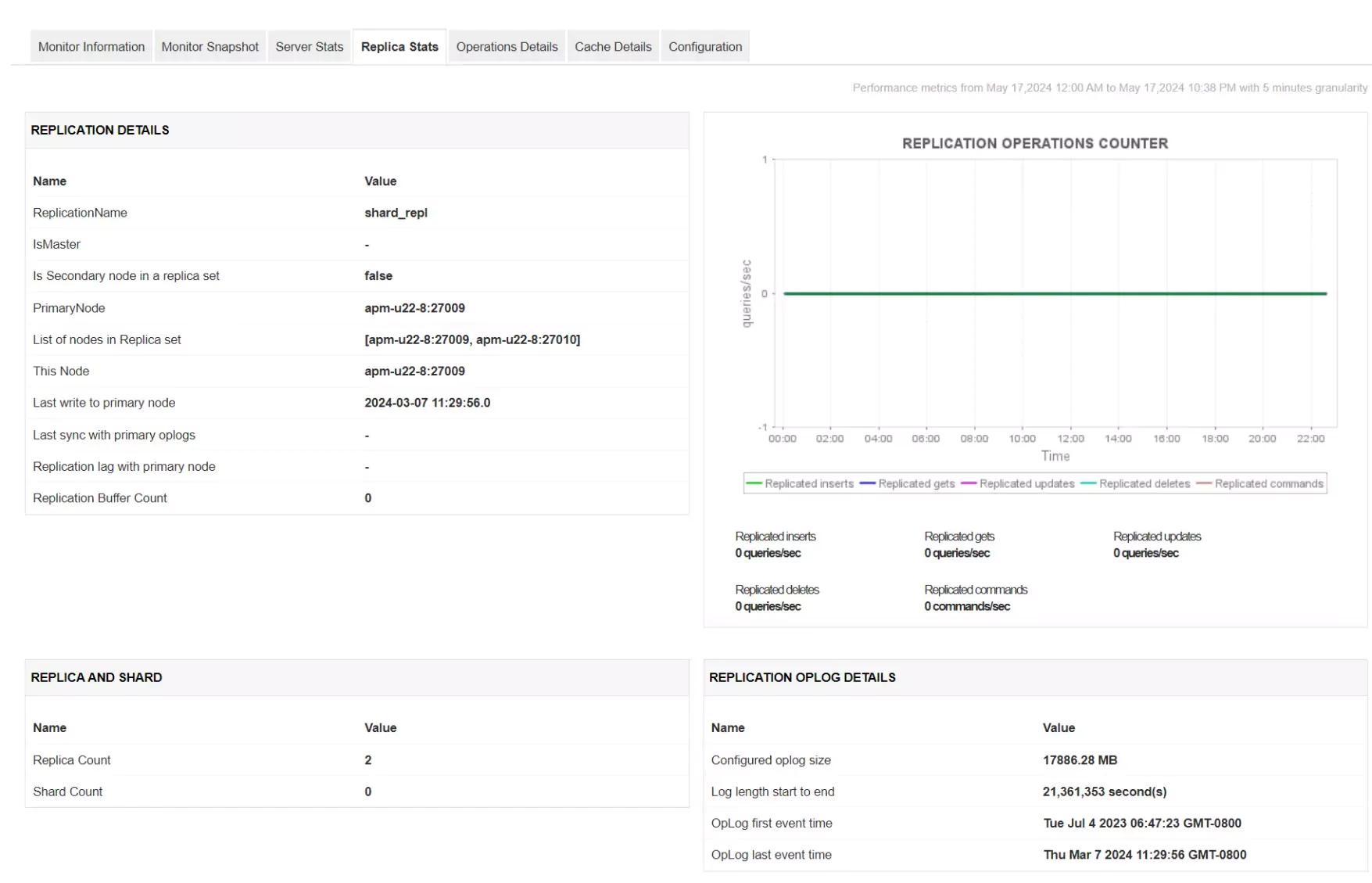
Operation details: Keep count of slow queries and queries that encountered write conflicts. Monitor Operation Scan and Order to identify poorly performing queries and resolve them to ensure optimum MongoDB server performance. Ensure high-availability by identifying write conflicts in secondary nodes with Applications Manager.
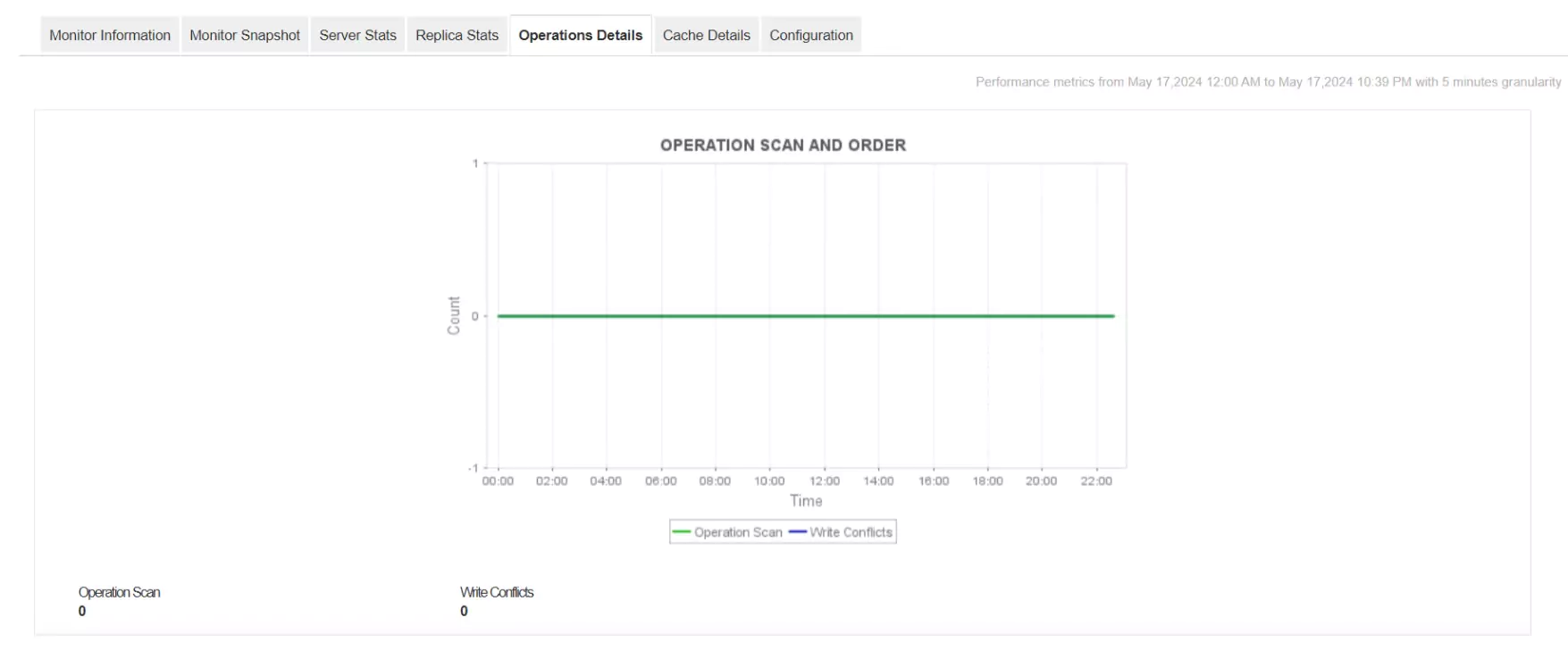
Cache Details: Monitoring the cache in real time and clearing unnecessary records and files keeps the server memory and storage clean. With proper insights into the statistics and location data about necessary and unnecessary cache, admins will be able to make the right call to free up space. By monitoring the cache details, the admin team can analyze the optimum size for cache and be alerted in case of a threshold breach. This helps DBAs to respond in time and act before it leads to issues like insufficient disk space or resource starvation.
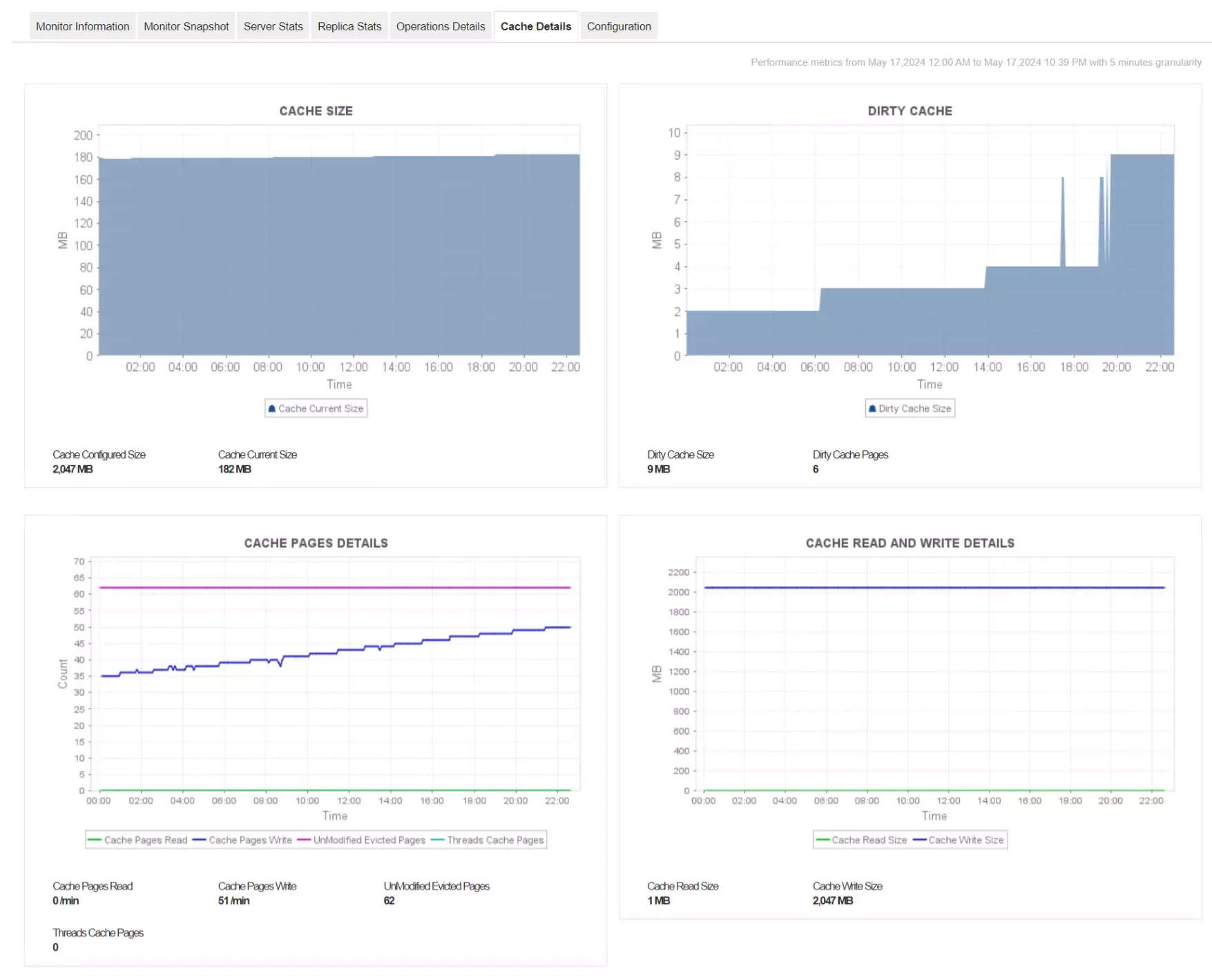
Reduce performance anomalies and critical incidents:
Monitoring the database infrastructure with Applications Manager steers you clear of performance bottlenecks and server slowdowns. It studies historic data and notifies you when the performance patterns of your key attributes deviate from normal before it leads to a critical issue.
Applications Manager's smart alerting system helps you reduce alert noise and speed up fixes. The tool's adaptive thresholds eliminate false alarms and manual errors that arise while updating threshold profiles of growth-dependent KPIs. You can receive alerts based on severity in case of a threshold breach for critical attributes like CPU, memory, connections, deadlocks, queries, shards, etc. This helps you understand the seriousness of incidents and act accordingly.

Optimize resources effectively
Monitor resource consumption trends with Applications Manager in real time to understand the requirements of the MongoDB servers better. Obtain accurate resource consumption forecasts and stay informed about potential resource starvation. Make well-informed decisions while optimizing resources. Keep your MongoDB architecture secure from incidents like improper resource allocation and unbalanced load distribution with Applications Manager. Apart from monitoring MongoDB servers, Applications Manager extends its monitoring support to multiple database vendors like:


